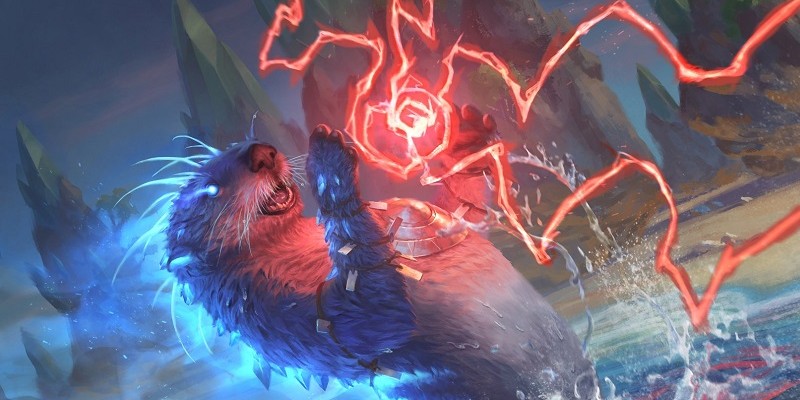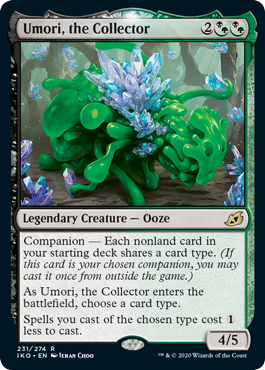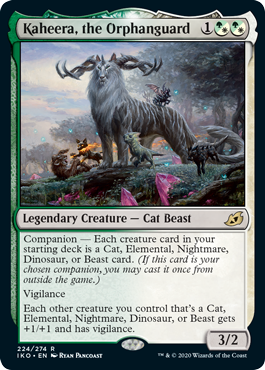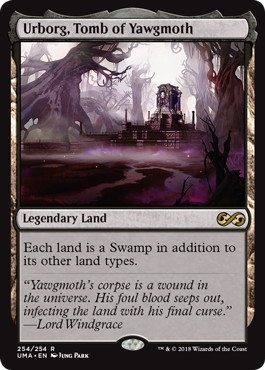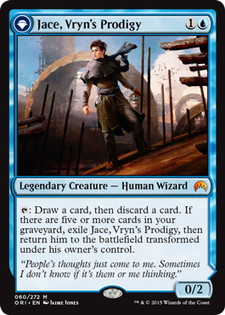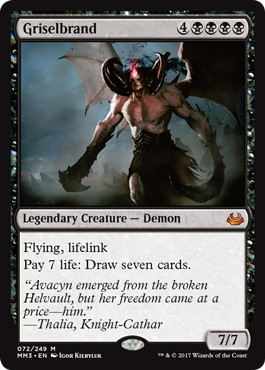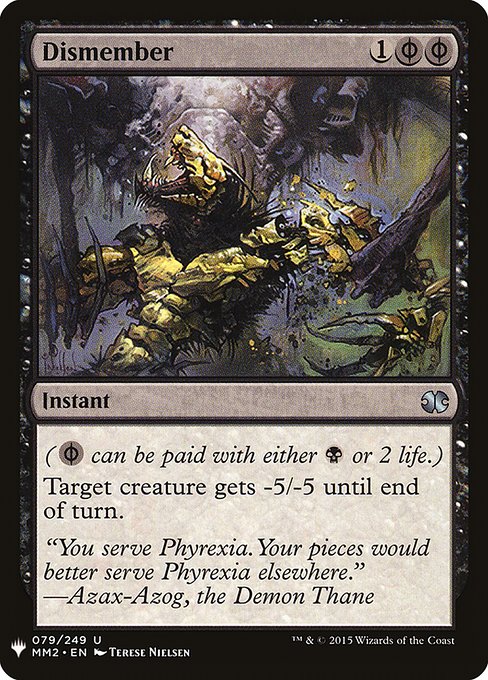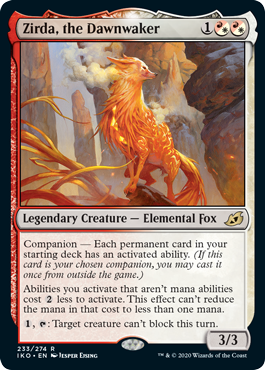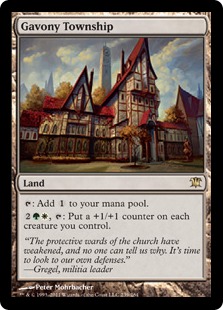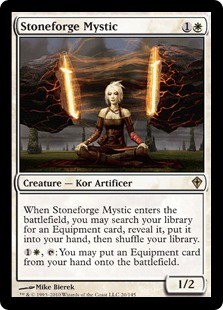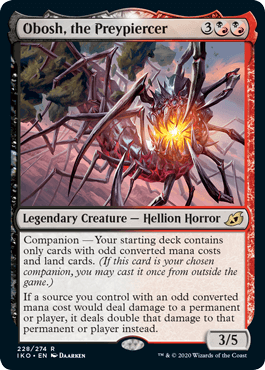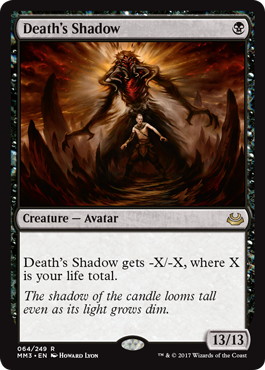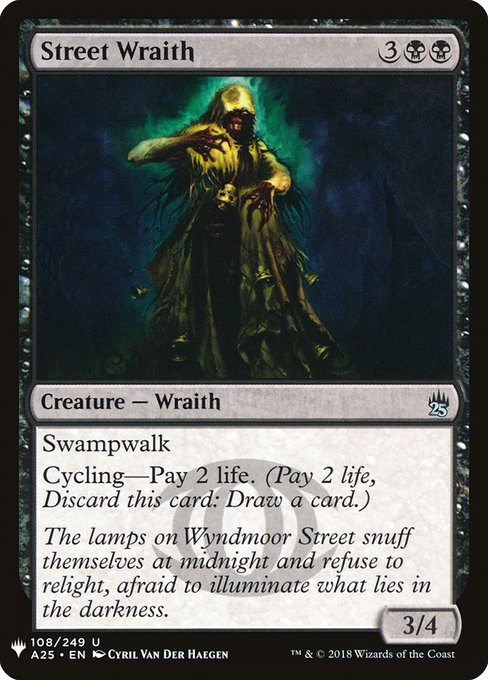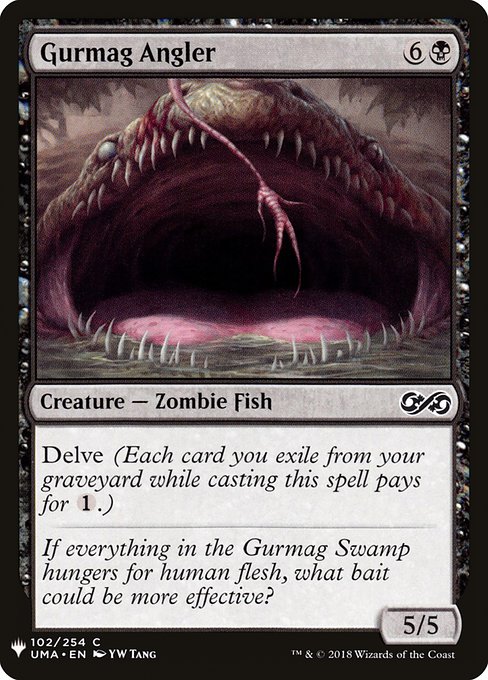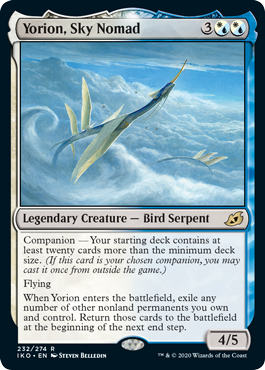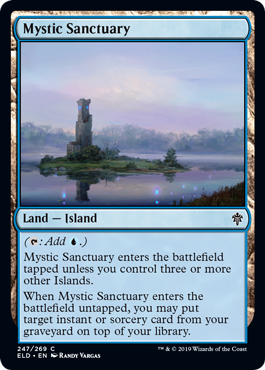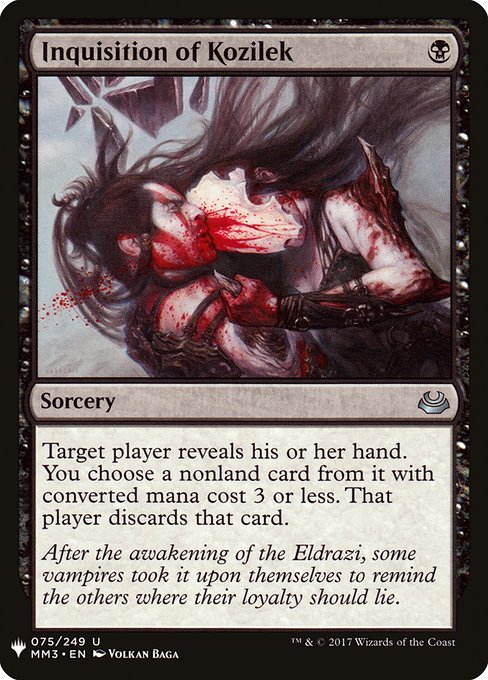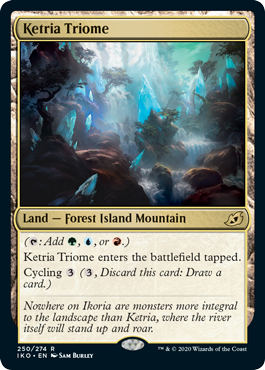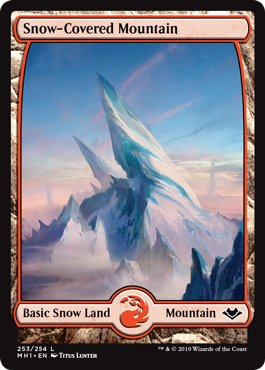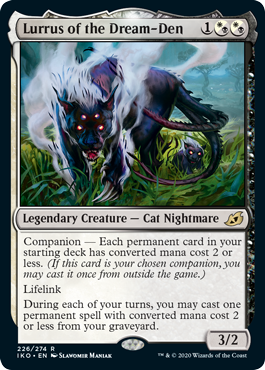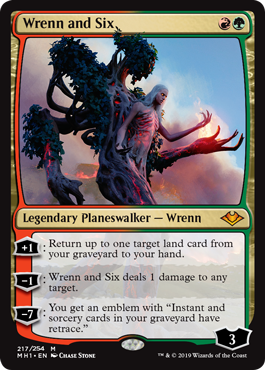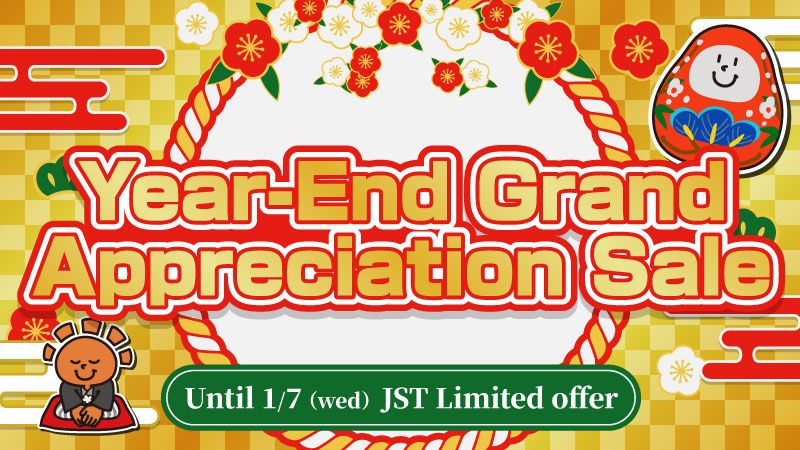Introduction
Since the Companions were first previewed they are all I’ve been thinking about when it comes to deckbuilding. Something I noticed early on is that I expect them to be better in older formats than in Standard or Pioneer. It’s an interesting balance where the payoff of the Companion is usually less impactful in the older formats (though not always), but the ability to make your deck meet the requirements of the Companion is much easier with a larger cardpool.
Given I usually write about Modern, I decided to continue focusing on Modern and share some decks I’ve built where I felt like some of the Companions naturally slotted in. It’s already a little worrisome to me how easy it felt to build some of these decks. While for some of them the Companion being utilized is quite weak, they still offer a free extra card and some utility that existing Modern decks didn’t already have. Though a few of these Companions look powerful enough to be built around and result in having a powerful payoff that you’ll always have access to.
《Keruga》, 《Umori》, 《Kaheera》, and 《Gyruda》
These are the Companions that I really wasn’t motivated to build a deck for. They come off to me as obviously weaker in Modern than the other 6, and they have quite strict deck building requirements that I think makes your deck too weak in Modern to build around. With that being said I do have some thoughts about each of them that I’d still like to share.
《Keruga, the Macrosage》
《Keruga, the Macrosage》 seems like the most difficult to utilize in Modern. The format is too fast to give up early plays, and there aren’t a lot of powerful cards that exist that “cheat” the restriction. 《Brazen Borrower》 and 《Bonecrusher Giant》 still involve skipping your first turn, and Cycling cards aren’t helping with board presence. I do think that Jeskai Fires in Standard will easily pick up Keruga however, at pretty much only the cost of playing all copies of 《Aether Gust》 in the sideboard.
《Umori, the Collector》
《Umori, the Collector》 is an interesting one to think about, and at a first glance seems like it plays extremely well with artifact decks. The problem is that Modern artifact decks use payoffs that aren’t artifacts, such as 《Urza, Lord High Artificer》 or 《Emry, Lurker of the Loch》. If 《Mox Opal》 were legal I could easily see traditional Affinity builds giving up cards like 《Galvanic Blast》 to be able to utilize Umori, but as it stands building a deck with only artifacts and lands doesn’t seem powerful enough. Even the 《Surge Node》 + 《Coretapper》 decks would rather have access to 《Karn, the Great Creator》 in their maindeck than an Umori in their sideboard.
The most likely place I expect Umori to see play is in Vintage 《Mishra’s Workshop》 decks, as right now the only card they sometimes play that would break the restriction is a single copy of 《Karn, the Great Creator》. While it isn’t castable off Workshop, I think having an 《Urborg, Tomb of Yawgmoth》 or 《Black Lotus》 giving you access to an extra threat can play out quite well in the Shop’s game plan.
《Kaheera, the Orphanguard》
《Kaheera, the Orphanguard》 comes off as a bit too narrow in deck building requirements for me. There are some aggressive creatures like 《Wild Nacatl》, 《Loam Lion》, 《Steppe Lynx》, 《Lightning Skelemental》, and 《Rotting Regisaur》 that could maybe work together in a Tribal Flames Zoo deck, but the problem is that those cards aren’t very good in Modern nowadays, and Kaheera doesn’t seem worth it to play such a weak deck. There also already exists a Modern Elemental deck, and I’m sure people will give up 《Phantasmal Image》s to try out Kaheera, but right now the gameplan of those Elemental decks almost seems built around copying abusing 《Risen Reef》 by copying/flickering it, or abusing 《Lightning Skelemental》 with 《Thunderkin Awakener》.
Perhaps one of those decks will be good enough, and if the other Companions didn’t look so much more powerful to me I would probably be more interested in Kaheera, but the nature of Companions is that they compete with all the other Companions now in deckbuilding.
《Gyruda, Doom of Depths》
《Gyruda, Doom of Depths》 suffers from a lot of the same problems as Keruga. Modern doesn’t have a lot of great options that help you feel like you won’t just be skipping turn one every game if your deck is only even-costed cards. It also suffers from just looking like the weakest payoff of all the Companions to me.
I was trying to approach Gyruda from two different angles, the first was trying to play it with 《Jace, Vryn’s Prodigy》, 《Goryo’s Vengeance》, and 《Griselbrand》, and I actually was heavily considering just not even playing it is as a Companion and just using 4 copies main so I could play better cards like 《Thoughtseize》 and 《Liliana of the Veil》. The issue with that style of deck is mostly that Gyruda is surprisingly bad at returning a creature from your graveyard with it’s trigger.
I don’t know how to do the really complex math that people like Allen Wu or Frank Karsten frequently use in their articles, but after using a hypergeometric calculator and seeing how many creatures I would need in a 60 card deck to be 90% to find one in my top 4 cards, I discovered that number was 26. 26 is an absurd number of even-costed creatures for a Modern deck, and even if I’m approaching the problem wrong I really don’t think the answer is going to end up being less than 20, which I’m still not willing to build my deck to accommodate.
This led to the second way I wanted to approach Gyruda, which was as a BG ramp deck using a 《Swamp》 based manabase and 《Witch’s Cottage》 to set up the top card of your library. This seemed like a lot of pieces that still involved a clunky assortment of even costed cards and I could never find a shell I liked as a full decklist.
As far as Gyruda in other formats goes, there might be hope for it in Legacy thanks to cards like 《Lion’s Eye Diamond》 and 《Ancient Tomb》 giving you reasonable acceleration. I also think it could be pretty strong in the Pioneer 《Soulflayer》 deck, as a lot of the core pieces of that deck are even-costed anyways, and you’d even have the upside of occasionally hitting 《Zetalpa, Primal Dawn》.
《Jegantha, the Wellspring》
This is a Companion that I expect to see play, but I don’t really have any innovative decklists. It’s just simply incredibly free to utilize in current Humans decklists, as well as 5 Color 《Niv-Mizzet Reborn》 with the exception of a single 《Supreme Verdict》. I assume both of these decks will start playing Jegantha in their sideboard and adjust their main decks accordingly. Even as a somewhat weak free card, it’s still a free card. It still helps with being short on spells to cast, and also helps both decks function against 《Blood Moon》 or 《Magus of the Moon》, which seems like it could really change the outcome of matches that could have otherwise come down to those cards locking you out.
Keep in mind that because Jegantha is a bit more narrow on utility and not as much of a build around for these decks, that it’s probably not worth it to adjust your sideboards too much and still give yourself access to a card like 《Dismember》 in Humans, or 《Ashiok, Dream Render》 in 《Niv-Mizzet Reborn》.
《Zirda, the Dawnwaker》
I was incredibly surprised to find so many amazing cards that I already enjoy using in Modern that follow Zirda’s Companion restriction. While this deck isn’t abusing the nature of a 《Training Grounds》 too much, I still think it’s a strong shell for Zirda.
Decklist: Selesnya Company with Zirda
- Jacob Nagro
- – Selesnya Company with Zirda
- Test Deck with Ikoria: Lair of Behemoths
- (Modern)
2 《Plains》
2 《Temple Garden》
4 《Windswept Heath》
1 《Misty Rainforest》
1 《Wooded Foothills》
1 《Verdant Catacombs》
4 《Razorverge Thicket》
2 《Horizon Canopy》
2 《Gavony Township》
-Land (22)- 1 《Walking Ballista》
4 《Birds of Paradise》
4 《Noble Hierarch》
2 《Giver of Runes》
1 《Giant Killer》
4 《Stoneforge Mystic》
2 《Scavenging Ooze》
4 《Heliod, Sun-Crowned》
4 《Ranger-Captain of Eos》
4 《Spike Feeder》
1 《Shalai, Voice of Plenty》
-Creature (31)-
1 《Sword of Feast and Famine》
1 《Sword of Fire and Ice》
1 《Batterskull》
-Spell (7)-
3 《Veil of Summer》
2 《Burrenton Forge-Tender》
2 《Selfless Spirit》
2 《Relic of Progenitus》
1 《Caustic Caterpillar》
-Sideboard (14)- 1 《Zirda, the Dawnwaker》
-Companion (1)-
For the most part I’m only abusing the cost reduction with equipments and 《Gavony Township》, but I still think that Zirda is a pretty nice card to have access to in this deck. I expect a lot of Zirda decks in Modern will continue to play it alongside 《Stoneforge Mystic》, because equipments play out much better when you always start with an extra creature in hand that makes them cost less to equip.
It’s also worth noting that you could play Zirda alongside 《Eldrazi Displacer》 and 《Drowner of Hope》, which is a way to generate infinite Eldrazi Scions. Unfortunately you would keep yourself from playing most of the other powerful Eldrazi, and would likely have to approach playing with those cards from a different angle than what 《Eldrazi Temple》 offers. Zirda conveniently also has an activated ability, so a deck built around those cards might include more copies of Zirda maindeck to make comboing more consistent.
《Obosh, the Preypiercer》
Odd is naturally a lot more friendly of a restriction than even in Magic. The ability to load up with 1 mana spells makes it easy to spend all of your mana each turn and not feel like you aren’t developing fast enough. The package of cards I’m most interested in playing with Obosh are 《Death’s Shadow》, 《Thoughtseize》, 《Street Wraith》, and 《Gurmag Angler》. While I miss out on certain cards like 《Snapcaster Mage》 or 《Temur Battle Rage》, I think the upside might really be worth it for Obosh in Grixis Shadow.
Decklist: Grixis Shadow with Obosh
- Jacob Nagro
- – Grixis Shadow with Obosh
- Test Deck with Ikoria: Lair of Behemoths
- (Modern)
1 《Swamp》
2 《Watery Grave》
1 《Blood Crypt》
1 《Steam Vents》
4 《Bloodstained Mire》
4 《Polluted Delta》
4 《Scalding Tarn》
-Land (18)- 4 《Death’s Shadow》
4 《Street Wraith》
4 《Gurmag Angler》
-Creature (12)-
4 《Opt》
4 《Stubborn Denial》
4 《Thoughtseize》
4 《Thought Scour》
2 《Fatal Push》
2 《Inquisition of Kozilek》
2 《Dismember》
2 《Kolaghan’s Command》
2 《The Royal Scions》
-Spell (30)-
2 《Ceremonious Rejection》
2 《Surgical Extraction》
2 《Nihil Spellbomb》
2 《Ashiok, Dream Render》
1 《Brazen Borrower》
1 《Plague Engineer》
1 《Mystical Dispute》
1 《Liliana of the Veil》
-Sideboard (14)- 1 《Obosh, the Preypiercer》
-Companion (1)-
While normally Grixis Shadow relies on Snapcaster in long games and 《Temur Battle Rage》 in short games, I think the consistency of always having Obosh will prove itself worth it over those cards. It offers to come down and potentially have its static effect provide an immediate lethal combat, or just be an effective 6 power threat on its own in a long game of resource denial.
I could definitely see it being a mistake to not use 《Collective Brutality》 (and perhaps other 2 mana spells) in the sideboard, as the Burn matchup might rely too heavily on specifically Brutality. For the most part my sideboards in this article are just a random collection of cards I think are good enough to use, that still follow the restriction of the Companion.
《Lutri, the Spellchaser》 and 《Yorion, Sky Nomad》
I’m grouping these together because I believe they are both powerful in Modern for similar reasons. The first reason is that Modern has a strong enough card pool that impacting the chances of drawing any specific card doesn’t outweigh the upside of having access to Lutri or Yorion, and the second reason is the existence of 《Mystic Sanctuary》.
《Mystic Sanctuary》 naturally fixes the problem that both of these cards generate, as it gives you access to redundant copies of spells you’ve already drawn. Thanks to the 4 different blue fetchlands, you can effectively play as many as 20 Mystic Sanctuaries if you wanted to under the restriction of either of these Companions.
I expect Lutri to be the weaker of these two Companions, which in the world of Companions existing, might mean it never really sees play. I still think the decks you could build with Lutri can still be powerful and competitive, and that a 3/2 《Dualcaster Mage》 that you always effectively start with in your opening hand is actually a lot more powerful than people give it credit for.
Decklist: 4C Control with Lutri
- Jacob Nagro
- – 4C Control with Lutri
- Test Deck with Ikoria: Lair of Behemoths
- (Modern)
1 《Snow-Covered Forest》
1 《Snow-Covered Swamp》
1 《Breeding Pool》
1 《Steam Vents》
1 《Watery Grave》
1 《Ketria Triome》
1 《Zagoth Triome》
2 《Mystic Sanctuary》
4 《Misty Rainforest》
4 《Polluted Delta》
2 《Scalding Tarn》
1 《Creeping Tar Pit》
2 《Field of Ruin》
-Land (25)- 1 《Ice-Fang Coatl》
1 《Jace, Vryn’s Prodigy》
1 《Snapcaster Mage》
1 《Uro, Titan of Nature’s Wrath》
-Creature (4)-
1 《Fatal Push》
1 《Inquisition of Kozilek》
1 《Lightning Bolt》
1 《Opt》
1 《Serum Visions》
1 《Sleight of Hand》
1 《Spell Snare》
1 《Thought Scour》
1 《Thoughtseize》
1 《Abrupt Decay》
1 《Assassin’s Trophy》
1 《Deprive》
1 《Drown in the Loch》
1 《Heartless Act》
1 《Manamorphose》
1 《Mana Leak》
1 《Remand》
1 《Terminate》
1 《Archmage’s Charm》
1 《Dismember》
1 《Force of Negation》
1 《Kolaghan’s Command》
1 《Pulse of Murasa》
1 《Cryptic Command》
1 《Fact or Fiction》
1 《Hieroglyphic Illumination》
1 《Mishra’s Bauble》
1 《Arcum’s Astrolabe》
1 《Wrenn and Six》
1 《Jace, the Mind Sculptor》
-Spell (31)-
1 《Duress》
1 《Surgical Extraction》
1 《Veil of Summer》
1 《Aether Gust》
1 《Collective Brutality》
1 《Weather the Storm》
1 《Mystical Dispute》
1 《Unmoored Ego》
1 《Damnation》
1 《Engineered Explosives》
1 《Nihil Spellbomb》
1 《Damping Sphere》
1 《Ashiok, Dream Render》
-Sideboard (14)- 1 《Lutri, the Spellchaser》
-Companion (1)-
Obviously there are a ton of different ways you could build a mostly singleton Modern deck. I wanted to show off this four color version because it gives a better view of the various powerful instants and sorceries you could have access to. While counterspells don’t play well with Lutri, cheap interactive spells and card advantage spells are payoffs you’ll want to be looking for.
I also wanted to show off that fetchable trilands existing make decks like these a little bit more achievable, obviously if I could play 4 《Arcum’s Astrolabe》s my mana would be a lot better, but I still think we’ll see the occasional 1 of Triome appear in Modern decks to offer slightly better mana, especially with 《Mystic Sanctuary》.
Yorion’s restriction makes us build our deck in a way that many of us have never tried to do in Magic, but adding 20 more cards to a deck is surprisingly easy. I took a Temur Urza deck that tangrams recently won a Modern Super PTQ with, and adjusted it to use Yorion slightly more effectively, and tried to keep the land and artifact ratios the same.
Decklist: Temur Uroza with Yorion
- Jacob Nagro
- – Temur Uroza with Yorion
- Test Deck with Ikoria: Lair of Behemoths
- (Modern)
1 《Snow-Covered Forest》
1 《Snow-Covered Mountain》
3 《Breeding Pool》
1 《Steam Vents》
1 《Ketria Triome》
3 《Mystic Sanctuary》
4 《Misty Rainforest》
4 《Scalding Tarn》
3 《Flooded Strand》
3 《Polluted Delta》
-Land (30)- 4 《Gilded Goose》
4 《Ice-Fang Coatl》
4 《Emry, Lurker of the Loch》
4 《Uro, Titan of Nature’s Wrath》
4 《Urza, Lord High Artificer》
-Creature (20)-
1 《Deprive》
3 《Metallic Rebuke》
4 《Cryptic Command》
4 《Engineered Explosives》
4 《Mishra’s Bauble》
4 《Arcum’s Astrolabe》
2 《Aether Spellbomb》
2 《Scrabbling Claws》
2 《Witching Well》
-Spell (30)-
2 《Ceremonious Rejection》
2 《Veil of Summer》
2 《Aether Gust》
2 《Damping Sphere》
2 《Ashiok, Dream Render》
1 《Tormod’s Crypt》
-Sideboard (14)- 1 《Yorion, Sky Nomad》
-Companion (1)-
With the exception of 《Witching Well》 and 《Ice-Fang Coatl》, these are all spells that were already in the list before I brought it up to 80 cards. I thought the addition of Well and Coatl would make Yorion good enough, and I don’t think Yorion has to be built around heavily in any deck. While it’s possible to keep a chain of value going with 《Restoration Angel》 and other cards that aren’t quite strong enough in Modern anymore, I think it’s easy enough to build a deck with cards you’d likely include if you didn’t have Yorion anyways.
In the manabase I felt I was safely able to add 《Snow-Covered Mountain》 and 《Ketria Triome》 among 8 total added lands. Normally those cards would likely be omitted from a 60 card deck because drawing them could be bad in certain spots, but an upside of playing with more than 60 cards is you reduce the odds of drawing 1-ofs that exist to tutor or fetch in specific spots.
I’d be really surprised if a deck like this isn’t one of the best decks in Modern moving forwards. Perhaps it won’t be an Urza deck and will just be a control or midrange deck utilizing Yorion a little better, but I really think Yorion is a high enough upside in this deck to be worth playing 80 cards.
《Lurrus of the Dream-Den》
《Lurrus of the Dream-Den》 is the most obviously powerful of the Companions. The restriction in older formats is incredibly easy to work around and the payoff is quite high. Weirdly Lurrus is already compatible with a lot of spell based combo decks across all formats, given they weren’t playing any expensive permanents to begin with. While some of those decks may end up using Lurrus as a Companion and slightly changing their deck to capitalize on it, I wanted to look at a Modern deck built around making Lurrus an incredibly powerful card.
Decklist: Jund with Lurrus
- Jacob Nagro
- – Jund with Lurrus
- Test Deck with Ikoria: Lair of Behemoths
- (Modern)
1 《Mountain》
1 《Swamp》
2 《Overgrown Tomb》
1 《Blood Crypt》
1 《Stomping Ground》
4 《Verdant Catacombs》
3 《Bloodstained Mire》
2 《Wooded Foothills》
1 《Nurturing Peatland》
1 《Raging Ravine》
1 《Barren Moor》
1 《Ghost Quarter》
-Land (20)- 1 《Hexdrinker》
4 《Tarmogoyf》
2 《Kroxa, Titan of Death’s Hunger》
1 《Dark Confidant》
1 《Scavenging Ooze》
-Creature (9)-
3 《Fatal Push》
3 《Inquisition of Kozilek》
3 《Thoughtseize》
2 《Lightning Bolt》
2 《Assassin’s Trophy》
2 《Kolaghan’s Command》
1 《Maelstrom Pulse》
2 《Seal of Fire》
4 《Mishra’s Bauble》
1 《Necrogen Spellbomb》
4 《Wrenn and Six》
-Spell (31)-
2 《Collective Brutality》
2 《Engineered Explosives》
2 《Damping Sphere》
1 《Collector Ouphe》
1 《Assassin’s Trophy》
1 《Kolaghan’s Command》
1 《Maelstrom Pulse》
1 《Boil》
-Sideboard (14)- 1 《Lurrus of the Dream-Den》
-Companion (1)-
Naturally 《Mishra’s Bauble》 felt like one of the best cards I could play alongside Lurrus as it gives me the ability to get value without needing more than 3 mana to just cast Lurrus. Discard spells to clear the way for Lurrus felt quite useful, and 《Wrenn and Six》 is likely the most powerful 2 mana permanent in Modern, so building a Jund deck around Lurrus felt easy. Because I wanted to abuse Lurrus with Bauble and 《Seal of Fire》 anyways, combining it with the utility of 《Traverse the Ulvenwald》 felt like the right direction. It’s possible you could build this deck as a 《Death’s Shadow》 deck, but I’m worried the lack of 《Street Wraith》 will be punishing, and Lurrus being a lifelink creature plays a little awkwardly with Shadow.
I’m sure Lurrus will likely be the most explored Companion of them all, and that we will see a lot of great innovations very quickly across all formats soon after the release of Ikoria: Lair of Behemoths.
Conclusion
It’s really hard for me not to think that these Companions are going to change constructed Magic forever. Perhaps myself and others are drastically overrating the value of our worst sideboard cards, but having an extra card in your hand is a really powerful tool, especially when you get to build your deck around it being the same card every game. I also mentioned multiple times in the article how some of these Companions feel like they are being outshined by the fact that other Companions exist. This means that if eventually only the more powerful Companions got banned, that it’s likely the next best ones would simply take their place.
I hope I’m wrong about the power level of the Companions. While I’m really excited to build decks around them and play with them soon, I’m sure I’ll get sick of seeing them all the time really fast. I could believe they don’t end up dominating Standard though, which is maybe why they were printed in the first place if they were truly only considered for one format. Currently most Standard decks feel like they are building an engine that generates a never ending supply of cards, and that makes the impact of 1 extra card a lot lower. Perhaps other formats will adapt to the Companions in ways that involve not using them, and exploiting the nature of restrictive deckbuilding somehow.
Thanks for reading, if you have anything interesting you’d like to share with me regarding the Companions, feel free to reach out to me on Twitter @JacobNagro.


